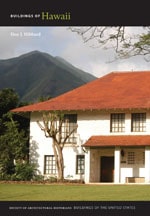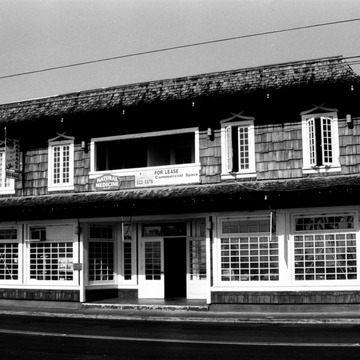Somewhat lost, but holding its own amidst Kapaa's clamorous, certainly not glamorous, visitor-oriented shops, the Seto market stands as a reminder of an earlier era in the town's mercantile history. Multipaned, fixed, ground-floor windows and a centered French-door entrance dominate the facade of this two-story frame building, providing pedestrians with easy visual access to the interior from three sides. Gracefully blending such Chinese motifs as the pagoda-like flared roofs and “crossed swords” detailing over the second-story windows with Western building materials and techniques, the store reflects not only the Chinese heritage of James Seto, the original owner of the building, but also the multicultural character of twentieth-century Hawaii.
At the time of its opening, the store was revolutionary for Kauai, according to the Garden Island newspaper. Anticipating the supermarket by several years, the store did not specialize in one product but included “a meat market, a fish market, vegetable stalls carrying both local and mainland fruits and vegetables, and a Hawaiian stall where foods, such as poi, may be purchased.” With its refrigeration and freezer systems, the store offered meat on a daily basis. The second story contained living quarters and offices. The first story served as a market until 1961, then stood abandoned for two decades. Through a substantial historic preservation effort, it underwent major reconstruction in 1981.
Robert Brooks Taylor designed this building following the vision of James Seto. Taylor was employed as the engineer-supervisor at Hawaiian Canneries in Kapaa, but did occasional freelance design, including the Church of Jesus Christ of Latter-Day Saints (c. 1932) in Kapaa, which has been heavily remodeled. After departing Hawaii, Taylor became an adviser for the Tennessee Valley Authority. Seto was the son of Ah Doi Seto, the owner of the Seto store in Hanapepe (KA12).















